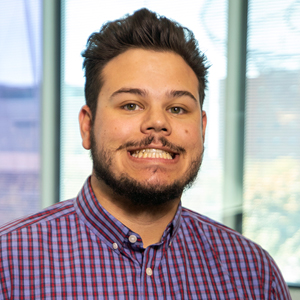
Arizona State men’s basketball coach Bobby Hurley has supported the athletic department’s academic coaches to make sure his players have stayed focused on their studies. (Photo by Michael Reaves/Getty Images)
TEMPE – The Arizona State men’s and women’s basketball teams were on their way to NCAA Tournament berths before the outbreak of COVID-19 shut down their sport.
They believe they still have something to celebrate. During this final week of spring semester classes, the programs can reflect on their commitment to the “student” part of student-athlete thanks to academic coaches, frequent Zoom meetings and thoughtful supervision.
“They’ve transitioned very well, and I have to say that I give the coaches a lot of props because they’ve supported me tremendously in making sure if I can’t get a hold of a guy, they are getting on them right away,” said Jessica Richardson, associate director of ASU’s academic support programs. “It has definitely been a team effort between me and the coaching staff.”
The school’s athletic department already had a strong foundation of academic success, as evidenced by another sort of bracketology.
The Institute for Diversity and Ethics in Sport (TIDES), in the first-ever Bracket for Brains and Diversity study for the Projected 2020 NCAA Division I Men’s and Women’s Basketball Tournaments, identified ASU as one of three schools represented by both its men’s and women’s teams.
The report is based on the NCAA’s Graduation Success Rates (GSR) and Academic Progress Rates (APR) for schools projected to be in the real tournament brackets.
But with everything shifting to remote learning because of the worldwide health crisis, have the Sun Devils maintained the same high standards in online classrooms?
ASU says “yes.”
And the Sun Devils can thank their coaches, but not just their basketball coaches. This is where Richardson and Shay Jewett come in. The two are academic coaches for the basketball programs, with Richardson working on the men’s side, and Jewett coaching the women.
Like everyone else in this pandemic, Richardson and Jewett have adapted.
Richardson said the academic team wanted to be sure the men’s team remained in a routine once moving to web-based classes. To that end, Richardson, a graduate assistant and a learning specialist regularly meet remotely with players via the online Zoom application, just as they did in person before the season ended.
Although there are times players have failed to make their scheduled Zoom meetings, men’s basketball coach Bobby Hurley and his staff have reinforced the emphasis on studies and supported Richardson in the transition to keep players on task.
“Meeting them on Zoom is a different dynamic,” Richardson said. “We wanted them to still stick to a schedule. I talked to coaches and made sure they knew every single guy’s study hall schedule or when they needed to be logged onto Zoom.”
Basketball is different from many sports in that it overlaps the fall and spring semesters. That can help academically because, Jewett said, the progression from the fall semester to spring forces the athletes to get immediately back on track with their schoolwork. But it is also demanding.
“For the fall semester, you get it started, you get a routine going. Then you throw in basketball,” Jewett said. “Those dynamics are different from the spring semester. They’re starting conference play, and now they have to start the spring semester. It’s different in terms of what they’re managing.”
The familiarity players have with the jump from winter break into a new semester during a sports season is now helping athletes, who have seen their season end abruptly. But they still must go on with their academic year.
Richardson, a former ASU soccer player, compares it to dealing with a sudden, season-ending injury, which she experienced as a player. It has helped her understand what athletes are going through now as they struggle with an unexpected end to their season while coping with the demands that come with being a student athlete.
“You still go through the same struggles no matter what sport you participated in while in college,” Richardson said. “It’s that balance. I went through a lot of injuries, and that has enabled me to relate to guys who are hurt and can’t play or redshirt because of an injury. I am able to help them through that process and tell them my story, how I came out on the other side, and they will too.”
The combined efforts of athletic and academic coaches is designed to help create a culture of success on and off the court for the Sun Devils. But Richardson and Jewett said accomplishments such as ASU’s position in the TIDES report comes down to the dedication of athletes.
“There is a sense of pride when you see your team is graduating, earning their undergraduate degree, and sometimes their graduate degree, because you feel like you had a little part of that,” Richardson said. “There’s pride in yourself and proud in the guys you work with.”
At the end of the day that’s the most fulfilling thing for Richardson and Jewett. They don’t measure success by their place in an academics bracket, but by how their players grow as people and students.
“I get to work with a fantastic coaching staff and dynamic young ladies,” Jewett said. “If you like sport, if you like competition, this job provides the opportunity (to be) able to still be involved in a different way. To see them grow, develop and change on the court and off the court is just a fun experience.”
